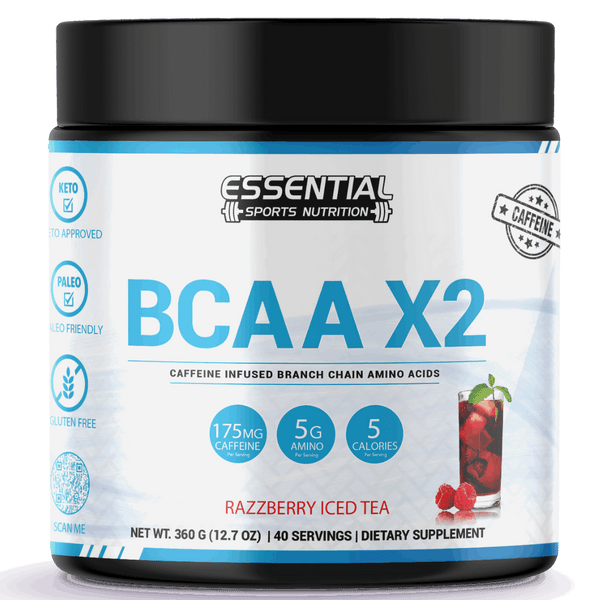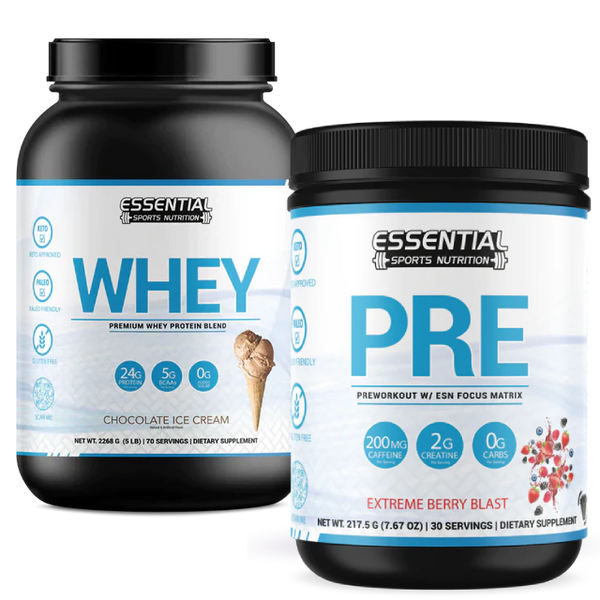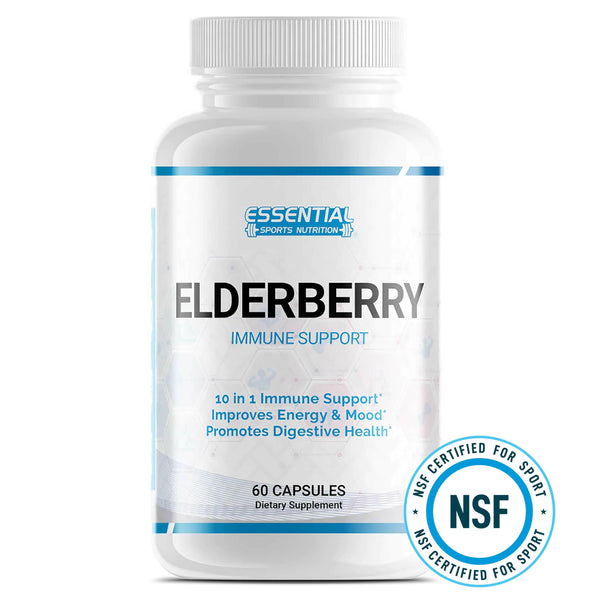Leg Press Machine: Learn About Proper Form and Varied Workouts
Master proper leg press form by keeping your back flat on the pad and feet evenly placed on the platform. Controlled breathing and slow reps engage your muscles effectively. Benefits include strengthening major leg muscles, enhancing lower body strength, and providing safe options for beginners. Prevent injuries by stretching regularly and maintaining proper form. Advanced lifters can try pause reps and different foot placements. Variations like high foot placement for glutes and hamstrings target specific muscles. Adjust seat position for targeted muscle engagement. Focus on breathing technique for best performance. Guarantee a thorough lower body workout experience with these techniques on your leg day.

Key Takeaways
- Maintain proper form for spinal alignment and muscle engagement.
- Engage major leg muscles for strength, tone, and power.
- Prevent injuries with correct form, foot placement, and gradual progression.
- Experiment with foot placements and angles for targeted muscle work.
- Adjust seat position for specific muscle targeting and range of motion.
Proper Leg Press Technique and Form
To execute the leg press exercise with correct form, make sure in your starting position your back remains flat against the pad at all times to maintain ideal spinal alignment and prevent injury. This position is essential for safeguarding your lower back and ensuring that the targeted leg muscles bear the brunt of the workout. Additionally, confirm that both feet are placed entirely on the platform. This action helps distribute the weight evenly across your legs, engaging all the leg muscles effectively. Controlled breathing is key during the leg press. Inhale as you lower the platform towards you and exhale as you push it back up. This breathing pattern aids in stabilizing your core and enhances overall performance. Slow and deliberate repetitions are crucial for maximizing muscle engagement and reducing the risk of strains or sprains. It's advisable to start with a lighter weight for warm-up sets to prepare your muscles adequately, then progressively increase the resistance as you advance through your leg press routine.
Muscle-Building Benefits

Maintaining proper form on the leg press machine is imperative for optimizing muscle-building benefits and enhancing lower body strength and muscle tone. When performed correctly, the leg press exercise offers several advantages for muscle development:
- Comprehensive Muscle Engagement: The leg press targets major leg muscles such as the quadriceps, hamstrings, and glutes, promoting overall lower body strength and muscle balance.
- Strength and Power Enhancement: Regularly incorporating the leg press into your workout routine can lead to increased leg strength, muscle size, and power output, aiding in various athletic activities.
- Targeted Muscle Isolation: By adjusting foot placements on the leg press platform, specific muscle groups can be isolated and targeted effectively, allowing for focused muscle development.
- Safer Option for Beginners: The leg press provides a safer alternative to free-weight exercises, making it an excellent choice for beginners and individuals with mobility limitations to build leg strength and muscle mass effectively.
Injury Prevention Techniques
Regularly incorporating stretching and strengthening exercises can effectively reduce the risk of common leg press-related injuries such as strains and knee pain. Ensuring proper form is maintained during leg press workouts is vital for injury prevention. Keep your back flat against the pad and focus on controlled movements to avoid unnecessary strain. Weak glutes can lead to knees collapsing inwards during the exercise, increasing the risk of injury. Strengthening these muscles is essential to prevent such issues. Avoid locking out your knees or allowing your heels to hang off the foot pad, as these mistakes can strain your knees and lower back. Consistent attention to proper foot placement, form, and range of motion significantly reduces the risk of injuries while using the leg press machine. By following these guidelines and incorporating them into your routine, you can minimize the chances of experiencing leg press-related injuries.
Advanced Lifter Adaptations
As an advanced lifter, you can fine-tune your leg press workouts by incorporating advanced form techniques like pause reps and slow eccentrics. To continue challenging your muscles, consider implementing progressive overload strategies such as drop sets and unilateral leg presses with heavier weights. Experimenting with different foot placements and angles can help you target specific muscle groups effectively and enhance the intensity of your leg press exercises.
Advanced Form Techniques
For advanced lifters seeking to optimize their leg press exercises, incorporating advanced form techniques is essential for maximizing muscle stimulation and growth. To take your leg press routine to the next level, consider these advanced techniques:
- Increase Resistance: Gradually increase the weight to challenge your muscles further.
- Utilize Unilateral Leg Presses: Perform single-leg presses to improve stability and address any muscle imbalances.
- Tempo Variations: Try incorporating slow eccentric phases to enhance muscle recruitment.
- Pause Reps: Intensify muscle engagement by including pause reps at the bottom of the movement.
Progressive Overload Strategies
To optimize muscle stimulation and growth as an advanced lifter, incorporating progressive overload strategies is key in further enhancing the effectiveness of your leg press exercises. As you advance in your training, gradually increasing the weight on the leg press machine can challenge your muscles to adapt and grow stronger. Implementing drop sets, where you reduce the weight after reaching failure, pushes your muscles to fatigue, promoting muscle growth. Utilizing the rest-pause technique, taking short breaks mid-set, helps sustain intensity throughout your workout. Incorporating tempo training with slower eccentric and concentric movements can further engage your muscles. Additionally, incorporating supersets with compound movements like squats or deadlifts can maximize muscle recruitment and overall strength, taking your leg press routine to the next level.
Targeted Muscles with Foot Placement Variations
When targeting specific muscles during leg press exercises, adjusting your foot placement can effectively isolate and work different muscle groups. Here are some foot placement variations to help you target specific muscles:
High Foot Placement: Placing your feet high on the foot platform targets the glutes and hamstrings by reducing the range of motion at the knee joint. This variation helps to emphasize the posterior chain muscles.
Low Foot Placement: If you place your feet low on the foot platform, you will isolate the quadriceps. This position minimizes the activation of the glutes and hamstrings, focusing the effort on the front thigh muscles.
Narrow Foot Placement: Opting for a narrow foot placement targets the outer thigh muscles, specifically working the lateral quadriceps. This variation can help in sculpting and defining the outer part of your thighs.
Wide Foot Placement: Widening your foot stance focuses on the inner thigh muscles, engaging the adductors and inner quads. This variation provides a well-rounded leg workout, targeting muscles often overlooked in traditional leg exercises.
Versatile Leg Press Machines
Adjusting the leg press machine settings and foot placement allows for essential targeting of specific leg muscles to optimize your workout routine. Leg press machines come in various types such as 45-degree, vertical, and horizontal variations, each designed to target different leg muscles effectively. Adjusting your foot placement on the machine allows you to focus on specific muscle groups like the quadriceps, hamstrings, and glutes. Single-leg press variations are also beneficial as they help address muscle imbalances and allow for the individual strengthening of each leg. Different leg press machine types offer varied pushing directions and angles, providing a thorough engagement of your leg muscles. It is fundamental to maintain proper form and technique while using leg press machines to maximize benefits and reduce the risk of injuries. Experimenting with the settings and foot placements on these versatile machines can help you effectively tailor your workout to meet your specific fitness goals.
Maximizing Leg Press Benefits
To maximize the benefits of leg press exercises, focus on proper foot placement to target specific leg muscles efficiently. Adjusting the seat position to maintain a 45-degree leg angle reduces spinal stress and engages muscles effectively. Paying attention to breathing technique during leg press workouts can enhance overall performance and guarantee ideal muscle activation.
Proper Foot Placement
Properly positioning your feet on the leg press machine is essential for maximizing the benefits of this exercise by targeting specific leg muscles effectively. To optimize your foot placement, consider the following:
- High Foot Placement: Targets the glutes and hamstrings with reduced knee range of motion.
- Lower Foot Placement: Isolates the quadriceps, minimizing activation of the glutes and hamstrings.
- Narrow Foot Placement: Focuses on the outer thigh muscles.
- Wide Foot Placement: Targets the inner thigh muscles and abductors.
Adjusting Seat Position
When arranging leg press exercises, ensure that the seat position on the machine is adjusted to target specific lower body muscles effectively. Moving the seat closer to the foot platform increases the range of motion for the legs, enhancing overall muscle engagement. If you position the seat higher, you can effectively target the glutes and hamstrings, adding intensity to your workout. Conversely, lowering the seat can place more emphasis on the quadriceps while reducing strain on the hip flexors. Proper seat adjustment is vital for maximizing the benefits of the leg press exercise, ensuring that the targeted muscles are effectively worked and minimizing the risk of injury. Adjust your seat position thoughtfully to optimize your leg press routine.
Breathing Technique Importance
How can mastering the breathing technique substantially enhance the benefits of your leg press workout? Proper breathing plays an important role in optimizing your leg press routine.
Here are four key ways in which focusing on your breathing technique can elevate your leg press performance and results:
- Enhanced Oxygen Intake: Correct breathing guarantees efficient oxygen delivery to your muscles, boosting performance and endurance.
- Core Activation: Inhaling before lowering the weight engages your core muscles, enhancing stability and readiness for the exertion phase.
- Power Generation: Exhaling during the upward phase of the press helps in generating power and maximizing strength output.
- Focus and Efficiency: Controlled breathing promotes focus, prevents dizziness, and improves overall workout efficiency and coordination.
Mastering your breathing technique can have a significant impact on the effectiveness of your leg press workout.
Conclusion

To sum up, mastering proper leg press form is essential for maximizing muscle-building benefits and preventing injuries. Just as a skilled sculptor carefully molds clay into a masterpiece, you must sculpt your body with precision and control during each leg press repetition. You can sculpt your lower body into a work of art by incorporating targeted muscle variations and utilizing versatile leg press machines. Remember, attention to detail and technique will help you achieve your fitness goals effectively.
Common Mistakes, Proper Form, and Benefits of the Leg Press Workouts FAQs
Q: What are the benefits of performing the leg press exercise?
A: You benefit from leg press by targeting the quadriceps, hamstrings, and glutes while minimizing spinal stress. It provides a safe muscle-building environment and suits all fitness levels. Start here to boost leg strength before advancing to free weights.
Q: What are common mistakes to avoid while using the leg press machine?
A: Common mistakes to avoid include using improper foot placement, not fully extending your legs, using too much weight, and arching your back during the exercise.
Q: How many types of leg press machines are there?
A: There are various types of leg press machines, such as the standard leg press, horizontal leg press, vertical leg press, 45-degree leg press, incline leg press, and more.
Q: What is the proper technique for performing the leg press?
A: The proper technique involves adjusting the seat and foot position, keeping your back flat against the seat, lowering the weight with control, and pressing the weight back up through your heels.
Q: What are some leg press alternatives for those who don't have access to a leg press machine?
A: Leg press alternatives include squats, lunges, step-ups, Bulgarian split squats, resistance band leg presses, and other exercises that target the leg muscles.
Q: How important is foot placement in the leg press exercise?
A: Foot placement is crucial in the leg press as it can target different leg muscles. Variations in foot placement can help emphasize specific areas such as the quads, hamstrings, or glutes.
Q: What is the difference between a vertical leg press and other types of leg press machines?
A: A vertical leg press machine requires pressing the weight directly upward, while other machines have a horizontal or inclined setup. The vertical leg press primarily targets the quadriceps.
Q: What Is the Best Form for Leg Press?
A: To nail the leg press, keep your back flat, feet planted. Start light for a warm-up, focus on slow, controlled movements. Breathe in as you lower, out as you push up. Engage all leg muscles, prevent injuries.
Q: Which Leg Press Variation Is Best?
A: The best leg press variation depends on your goals. High foot placement targets glutes and hamstrings, low placement isolates quads, narrow emphasizes outer thighs, and wide works inner thighs. Calves? Toe raises. Choose based on your desired muscle focus.
Q: What Are the Three Leg Press Variations?
A: Remember that the leg press machine offers three variations: 45-degree, vertical, and horizontal. These variations target the same muscles but have slight differences in mechanics and muscle engagement. Adjust foot placement for specific muscle targeting.




























